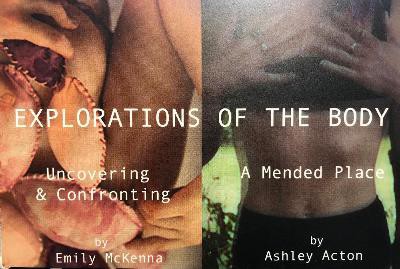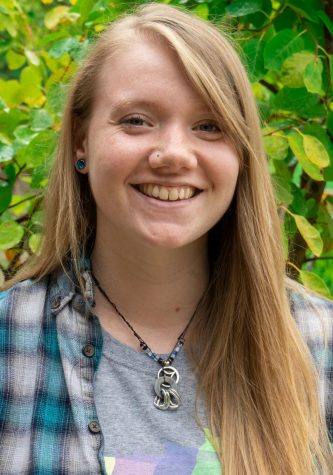GV graduates discuss vulnerability through art

Courtesy / GVSU.edu
Jan 7, 2019
As thousands of graduating students left Grand Valley State University after the latest fall semester, Bachelor of Fine Arts seniors watched their artwork go on display. Emily McKenna and Ashley Acton, two recent GVSU alumni, shared an exhibit at Spiral Gallery in Grand Rapids called “Explorations of the Body,” which took place throughout December. The three-week show discussed the vulnerability and social stigmas of the human body through photos, sculptures and interactive artwork.
As part of their degree requirements, BFA students must organize an art show and exhibit their artwork from that semester. While McKenna says that GVSU offers plenty of on-campus exhibition opportunities for art students, she and Acton wanted to work with a gallery off-campus to get experience.
“It was definitely challenging trying to find a gallery that was affordable and available during the time we needed,” McKenna said. “We were so lucky to find Spiral.”
Creating an exhibition allows students to receive feedback from gallery visitors and peers as well as from a review committee that each BFA student is assigned. This process gives seniors real-world experience in preparation for their careers. For McKenna, positive feedback from a reviewer cemented her artistic confidence.
“One source of feedback that has really stuck with me is how my work lives in this space between seriousness and humor,” McKenna said. “Knowing that my work is successfully living in between these two worlds of humor and vulnerability in order to create the dialogues that we need to be having is really affirming.”
Abcessions, McKenna’s favorite piece from “Explorations of the Body,” featured pink fabric domes overflowing with fiberfill to represent acne, as well as remind the viewer of breasts. McKenna intended to combine these images to challenge societal implications about the body. Visitors were encouraged to interact with the work to create a humorous view of a taboo topic in order to make them “comfortable with the uncomfortable.”
Although featuring different art styles, the combination of McKenna’s and Acton’s portfolios provided viewers with the chance to analyze their perceptions of vulnerability and femininity. McKenna’s sculpture and interactive work contrasts Acton’s photographic focus. Despite unique mediums, the artists’ work was connected through feminist themes.
“When we decided to do our show together I don’t think either of us knew…that each of our bodies of work would have a really good conversation with one another,” McKenna said.
She added that working with Acton made preparing the exhibit less stressful. “I can’t imagine having gone through this without her.”























